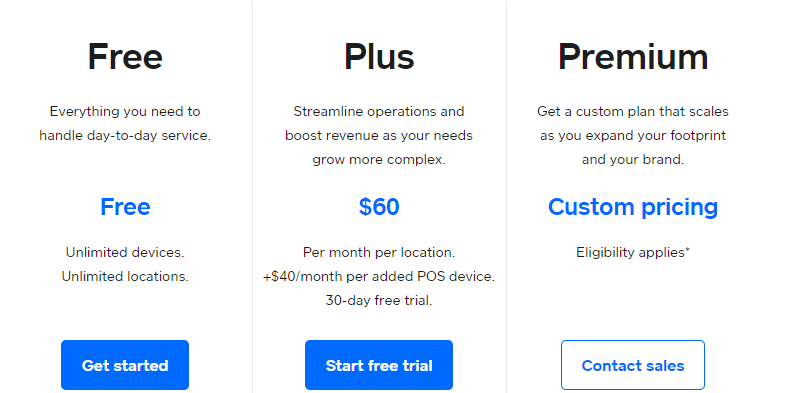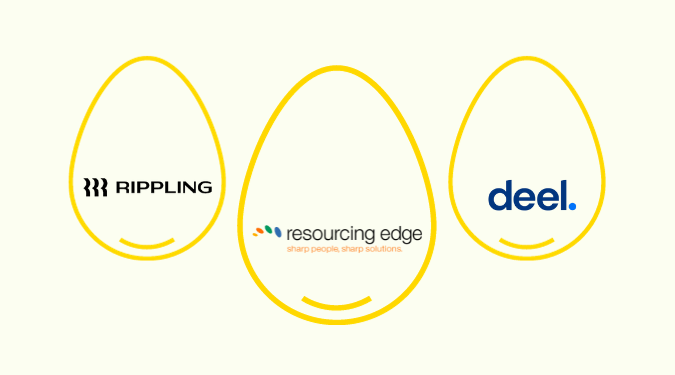Disclosure: This content is reader-supported, which means if you click on some of our links that we may earn a commission.
You don’t need to start a full-scale restaurant to indulge your passion for food and hospitality. A food truck business has good profit potential, relatively low overhead costs, and isn’t beyond your means. So you can live your dream of being your own boss and share your passion for food without breaking the bank.
Why Starting a Food Truck Business Is Worth It
Many first-time entrepreneurs struggle with the choice of starting a sit-down restaurant or a food truck business. When deciding, keep in mind that there are several great reasons why you may want to take the food truck route.
Firstly, there is the startup cost. A food truck business is capital intensive, as we will see in the next section. But this cost is still significantly cheaper than the one needed to start a restaurant. There are also fewer overhead costs. In short, a food truck business is more affordable and less risky to start than a traditional restaurant.
The food truck business also offers many possibilities in terms of location. Foot traffic is everything in the food industry. Once you’ve picked your restaurant location, that’s it. On the flip side, mobile food trucks allow you to experiment with different locations near busy office buildings, summer festivals, breweries, downtown, and public parks. Rather than relying on customers to find you, a food truck makes it possible to find your ideal customers.
Furthermore, there is an opportunity to create a loyal customer base. Many successful food trucks have a cult-like following, guaranteeing consistent income. Many food truck customers cite the dining experience’s quality, low prices, and convenience as the main reasons for eating at food trucks. There is a great opportunity here to build brand loyalty if you do things right.
Lastly, the food truck business offers additional avenues for supplementing your income. Many food truck owners also dabble in catering, events, and food delivery as side gigs. And the truck itself provides an excellent opportunity to advertise your additional services.
The Investment Needed To Start a Food Truck Business
While a food truck business is cheaper to start and operate than a restaurant, it still has a considerable startup cost.
The most obvious and most significant expense is the food truck or trailer. This cost can vary widely depending on the type of vehicle and its condition. A food truck can cost anywhere between $50,000 and $100,000. You might be able to get a food truck for less than $50,000, but you get what you pay for. You’ll also need to consider repairs and other possible downtimes with a severely used food truck.
Where are you going to park your truck? If you are planning on operating a food truck in a city, a safe parking spot for your truck can easily run a few hundred dollars each month.
You’ll also need equipment to make and serve food and beverage. Depending on your specialty, this equipment may include flattop grills or griddles, ranges, fryers, sandwich presses, and coffee makers. These could set you back anywhere between $1800 and $5000.
Additionally, there are licenses and permits to worry about. These can vary widely depending on your city or state. Some jurisdictions are more forgiving to food truck businesses than others. Some of the typical licenses and permits you can expect to need include:
- Business license
- Employer Identification Number (EIN)
- Fire certificate
- Vehicle license
- Food handler’s permit
- Health department permit
These fees associated with these licenses and permits will depend on where you do business. Keep in mind that many of these must be renewed.
Other potential costs for starting your food truck business include a point-of-sale system, marketing, wages, insurance, food costs and inventory, parking and storage, and paper products. The total startup cost of starting a food truck business ranges between $40,000 and $250,000, depending on various factors.
Although you’ll likely mostly accept cash, it’s worth investing in a point of sale system like Square. You’ll be able to cater to more clients, including those that prefer to pay with credit or debit cards or mobile payments. Square also comes with great additional features, including menu management and automatic inventory alerts. Your customers will also be able to order online for pickup or delivery. Square has a free plan to get you started, but you’ll still be paying for the POS system.

We’ll talk more about this in Step 7 and how it helps your business.
9 Steps To Start a Food Truck Business
Starting a food truck business may seem daunting. But it doesn’t need to be overwhelming. By breaking down the process into manageable steps, you will reach your goal of owning a food truck faster.
Here are the steps you need to take to start your food truck business.
Step 1 – Write a Business Plan
Your business plan is essentially a guide that charts the course to follow when starting your business. The business plan doesn’t need to be lengthy or complicated. You don’t even need to make it too formal, especially if you won’t use your plan to secure financing.
But it should highlight the significant aspects of your business. Some of the critical elements to cover in your food truck business plan include:
- An overview of your food truck concept and the projected startup cost
- The kinds of food you will serve, what makes your business unique, and your reasons for getting into the food truck business
- Your menu items, how much they cost to produce, how much you will sell them for, estimated prep and cook time for each item, and your profit margin
- Your target market, including demographics, the total number of potential customers, and a description of your ideal customers
- Possible locations for your business and the cost of each site, including permits
- Your branding and marketing strategy
- Your business management strategy, including partners and who is responsible for what
- Your financial plan, including your forecasted sales, seasonality, estimated customer expenditure, cost of goods and supplies, and your overall expenses
Be sure to conduct in-depth market research to ensure that your business can thrive given the existing market. Some of the factors to consider in your market research include:
- Existing food trucks and concepts
- Busy street times
- Average demographic
- Allowed locations for food trucks
Step 2 – Choose a Food Truck Concept
The main idea behind your food truck concept is to attract customers to your business. Additionally, a successful concept will help create repeat customers. Ideally, your theme should be unique in your location.
You don’t necessarily need a complicated menu. Traditional food truck menu items can do just as well with a simple twist, such as food fusion, a unique dining experience, or unique ingredients. Whatever the case, a simple concept makes it easier for your customers to place their orders. You’ll also be able to make the orders faster.
Some common food truck themes/concepts to consider include:
- Barbecue
- Tacos
- Burgers
- Hot dogs
- Ice cream
- Waffles
- Organic and local foods
- Ethnic fusion
- Paninis
- Cupcakes
- American regional cuisine
- European cuisine
Use what you know how to cook as the inspiration for your food truck concept. It is tempting to go all out with ethnic fusion as a unique selling point. But you’ll still need to deliver high-quality and delicious food. If you are an expert at making delicious dumplings, and especially if there aren’t any (or many) dumpling food trucks in your area, that would be a great theme. Plus, you can put anything in a dumpling wrapper and can still be creative with your food.
Step 3 – Budget for Your Business
It is crucial that you sort out your capital well in advance. The following steps require money, so getting this step out of the early on is vital. Again, the most significant cost will be the food truck. Ideally, you want an equipped truck, complete with a commercial kitchen and refrigerators. This will cost you anywhere from $50,000 to $150,000.
Be sure to budget for permits and licenses to ensure your business is legal. You’ll need to do some digging to find the exact licenses you need in your city. Each license and permit could set you back anywhere between $75 and $1000. The number of licenses and permits you require will also depend on your location. Additional fees to consider include:
- Insurance
- Parking fees
- Event fees
- Point of Sale (POS) system
- Mobile phone and internet
- Marketing
Compile a list of all expenses for the initial setup of your business and keep a log of every expense. You’ll need this information for tax purposes and also to keep an eye on your spending.
Step 4 – Secure Financing for Your Business
As you can tell already, starting a food truck business isn’t cheap. So, you’ll need to find a source of funding. You may be able to get started with your savings. You can keep the initial startup cost low by purchasing a used fully-equipped truck, but there are disadvantages with that, too.
Alternatively, you can apply for a secured vehicle loan to offset a new food truck’s hefty price.
Other funding options include:
- Line of credit
- Unsecured loan
- Friends and family
- Small Business Administration microloans
- Equipment loans
- Rollover of Business Startup (ROBS) from a retirement account
- Crowdfunding
Step 5 – Acquire Your Food Truck
Again, you have options to keep your startup costs low when acquiring your food truck. There’s the option to purchase a used food truck. You can get a used food truck for as low as $50,000. But be careful. Cheap used trucks typically have internal problems. This makes it challenging to anticipate repair costs when the food truck eventually breaks down.
Also, most financiers apply a higher interest rate for used food trucks. Usually, these trucks come with inherent risk, so you’ll be forced to cover the difference. So although used trucks have a lower upfront cost, they can be more expensive in the long run.
The next best option is to purchase a new truck. It will cost you more initially, but the expense may be worth it. A good truck could set you back between $75,000 and upwards of 150,000.
Finally, if you are unsure about the truck purchase, renting can be a great option to consider. Generally, renting a fully equipped food truck should cost you $2,000 to $3,000 per month. With renting, you won’t have to deal with maintenance, and you can test your idea before you commit to purchasing your own truck.
Step 6 – Get The Necessary Licenses and Permits
Check with your local chamber of commerce for the complete picture of the licenses and permits you need to operate a food truck business. Usually, you’ll need most of the permits that restaurants require. These include:
- Foodservice license
- Employee health permit
- Business license
- Employer Identification Number
There are also specific food truck permits that you’ll need. The most common ones are zoning and parking permits, seller’s permits, vehicle licenses, fire certificates, and mobile food facility permits. You can also check with the local DMV about parking restrictions in your city.
Step 7 – Invest In a Mobile POS System
Food truck customers primarily pay with cash. But credit cards and mobile payments are becoming increasingly popular. You risk alienating this segment of your customer base if you don’t have a POS system.
Square for Restaurants is a great POS system for a food truck business. The system is specifically designed for restaurants, so you know it will serve your food truck business well. Square offers a free basic plan. But you’ll have to pay for card processing fees and contactless payment transactions. The free plan also comes with a point of sale system and team management feature.

The POS service has a robust online mode. This feature saves card transactions for up to 72 hours in case you lose internet connectivity. Then, the transactions run automatically as soon as the internet is back up.
The Square Online store also allows you to accept orders on the internet. You can also use third-party integrations to add a delivery function to your online store. Other noteworthy features include:
- Adjust sales tax rates when you change states
- Time clock to log employee hours
- Cash management
- Auto gratuity
- Menu management
- Real-time order updates
Besides the free plan, Square offers a plus plan for $60 per month and comes with advanced POS features. Square also offers custom pricing for its premium plan.
Step 8 – Create Your Menu
It will take some time and experimenting to perfect your menu. Even with market research, it’s hard to tell how people will react to your food. As a result, many food truck owners end up adjusting their menus to fit customer’s demands as they go. But you can start with what you are passionate about. This includes serving a memorable signature dish that people will know you for.
You’ll also need to consider your menu’s prep and cooking time. One primary reason many people visit food trucks is the shorter waiting time compared to sit-down restaurants. You’ll also need to make sure that your food is filling. People will pay a premium price for a chef’s plate at a high-end restaurant, but not a food truck. Your food needs to be flavourful and reasonably priced.
Finally, make sure that you can deliver great quality consistently once you put together your menu. Customers are counting on you to provide high-quality and tasty food every time.
Step 9 – Scout for Locations
You are now ready to take your business on the road. It may take a while before you can identify the prime locations for your food truck. However, you can start with selling food at events. Places such as fairs, festivals, and parades are great places to gain real-world experience in the food truck business.
You don’t necessarily have to go out on your own to attract customers. Parking with other food trucks can be a good thing. Food trucks clustered together tend to attract customers. The only thing is to make sure that you are selling something different. For example, you won’t have to worry about competition when selling fresh wok-prepared food next to a food truck selling gourmet burgers.
You’ll also need to consider the distance from your food preparation area or local grocery store. Ideally, you should prepare all your food in the truck. But supplies do run out. So, you should be able to restock quickly when you run low on food or ingredients.
Consider also reaching out to local bars, pubs, offices, and shopping centers for potential partnerships. Other potentially lucrative locations include street parking on busy streets, parks, farmers markets, college campuses, gas stations, and near large office buildings in business districts.
Next Steps
The next step is to market your business. Successful food truck owners understand the importance of repeat customers. Consider creating a business website and marketing your food truck on social media. Social media is instrumental when changing your location regularly. Customers need to know where to find you!
Finally, consider diversifying into catering to supplement your income. Catering for sports tournaments, corporate functions, and weddings can be a great source of income. Many successful food truck owners make most of their money catering at events.
Check out some of our other guides for more inspiration when creating your food truck business.














